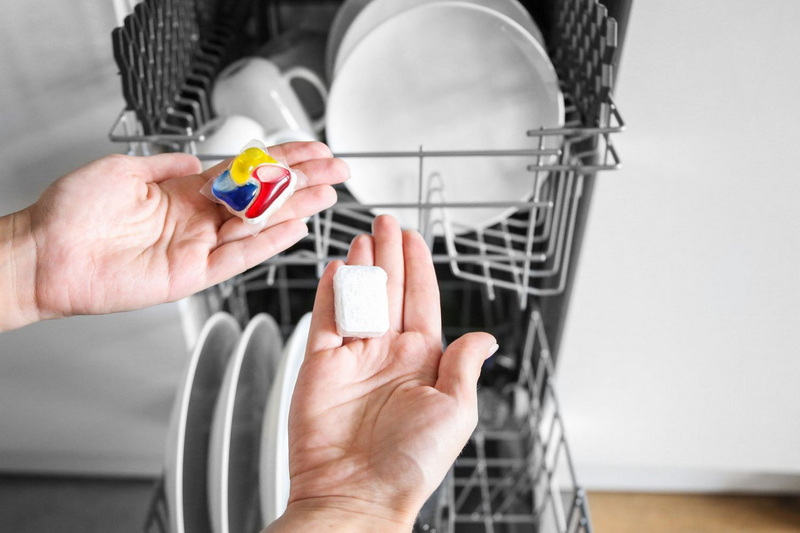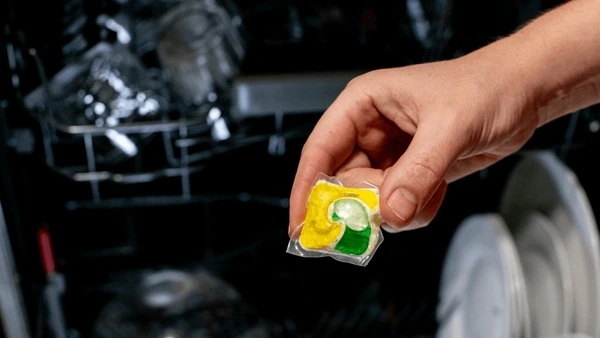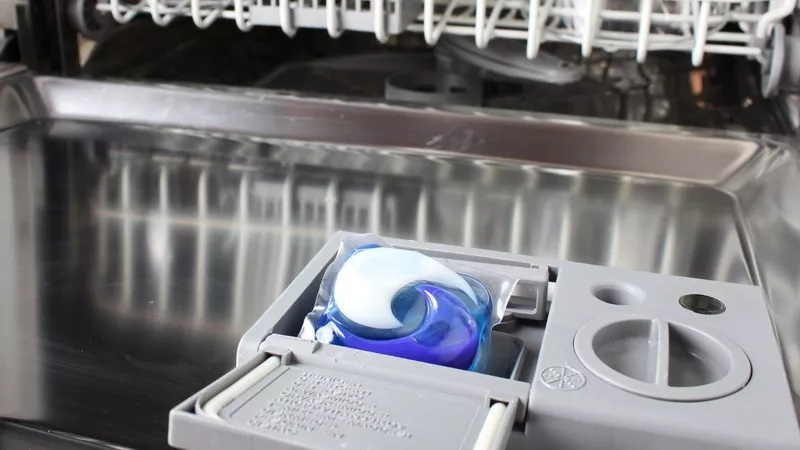Dongguan UFine Daily Chemical Co.,Ltd.
- All
- Product Name
- Product Keyword
- Product Model
- Product Summary
- Product Description
- Multi Field Search
Views: 222 Author: Tomorrow Publish Time: 10-30-2025 Origin: Site











Content Menu
● Understanding how dishwasher pods work
● Can pods harm dishwashers? Common concerns
● Choosing the right pod for your dishwasher
● Signs your dishwasher may be affected by pod use
● Maintenance and troubleshooting tips
● Special considerations for different dishwasher models
● FAQ
>> 1. Are dishwasher pods safe for all dishwasher models?
>> 2. Can detergent pods cause residue on dishes?
>> 3. Do pods cause more wear on seals or pumps?
>> 4. How should I load my dishwasher when using pods?
>> 5. What should I do if my dishes are not clean after using pods?
Dishwasher pods have become a convenient, pre-measured option for cleaning dishes. They promise consistent results with less mess and less guesswork than traditional liquid or powder detergents. However, concerns persist about whether dishwasher detergent pods can cause harm to dishwashers or reduce cleaning performance over time. This article explores the potential issues associated with dish detergent pods, how they work, signs of trouble, best practices for usage, and considerations for different dishwasher models. The goal is to provide a balanced, evidence-based overview to help readers decide whether pods are appropriate for their household and how to minimize risk to appliances.

Dishwasher pods are hermetically sealed packets that release detergent, rinse aid, and sometimes other additives when exposed to water. The outer film dissolves in the dishwasher's wash cycle, allowing the contents to disperse evenly. Pods are designed to deliver a precise amount of cleaning agents per cycle, reducing the chance of overuse or underuse. They typically contain:
- Detergent active ingredients that break down fats and soils.
- Surfactants that help water spread and penetrate grime.
- Enzymes that target starches and protein-based soils.
- Additional components such as rinse aids, water softeners, or colorants depending on the formulation.
Pros
- Convenience and consistent dosing.
- Less handling mess and potential product waste.
- Often formulated with built-in rinse aids to improve drying results.
Cons
- Higher per-cycle cost compared to bulk detergents.
- Possibility of incomplete dissolution in very dirty or hard water cycles.
- Risk of pod damage if exposed to moisture before loading or if the dispenser is faulty.
1. Residue buildup and dispenser blockage
Some users worry that residual film from pods can leave sticky residue on the dishwasher dispenser, seals, or interior surfaces, potentially leading to blockages or sensor misreads. In practice, most modern dishwashers are designed to handle regular pod usage, and when used according to manufacturer instructions, the risk of significant residue buildup is low. If residue is observed, it may indicate a need for periodic cleaning of the dispenser and door seals.
2. Overuse or incorrect dosing
Pods are pre-measured for standard loads and typical soil levels. If a dishwasher runs very heavily soiled loads or if the detergent is not dispensed properly due to a malfunction, there can be ineffective cleaning or potential overflow of detergent. This is more likely in older or malfunctioning machines where the dispensers do not open reliably.
3. Mechanical wear and seals
Concerns about pods causing undue wear on seals or gaskets are common but not strongly supported by evidence. The detergent is designed to be sufficiently gentle for typical dishwasher components when used as directed. Worn seals or faulty valves, not the pods themselves, are more typically the source of leaks or damage.
4. Water hardness and cleaning efficiency
In hard water areas, the buildup of mineral deposits can affect performance, just as with other detergents. Pods containing rinse aids and water-softening components can help mitigate mineral deposits, but persistent hard water can still lead to scale inside spray arms, filters, and heat exchangers. Regular maintenance is important, regardless of detergent type.
5. Environmental and safety considerations
Pods are generally safe for households with children when used according to instructions, as the outer film is designed to dissolve in water. However, accidental ingestion or forced openings by curious children or pets can pose risks. From an appliance perspective, there is no direct evidence that pods cause more damage than other detergent forms, but environmental factors such as residue in the wipe-down or improper disposal can have indirect effects on cleanliness and longevity of the appliance.

- Compatibility: Most modern dishwashers are tested with standard pod formulations. Manufacturers typically recommend using their preferred detergent type, whether pods, liquids, or powders, to ensure optimal cleaning and to maintain warranty conditions.
- Loading and placement: Place the pod in the detergent dispenser as instructed, ensuring the dispenser flap closes properly. Do not place pods directly in the bottom of the tub unless the manufacturer's guidance specifies otherwise.
- Pre-rinse and load configuration: Scrape large food particles, avoid overloading, and arrange items to prevent nesting, which can impede cleaning. Pods work best in well-loaded cycles with appropriate water temperature.
- Water temperature and cycle selection: For best results, select a cycle that matches the soil level and water temperature recommended by the detergent manufacturer. Most pods perform well in standard cycles with warm to hot water.
- Maintenance: Periodically clean the filter, spray arms, and interior of the dishwasher. If you notice persistent residue on dishes, spots on glassware, or reduced cleaning performance, run a maintenance cycle with a dishwasher cleaner following manufacturer instructions.
- Consider your water hardness: If your water is very hard, you might benefit from pods that include a built-in water-softening agent or use a separate rinse aid. If mineral buildup is a recurring issue, adding a descaler or water-softening additive as recommended by your dishwasher's manufacturer may help.
- Check warranty requirements: Some manufacturers specify compatible detergents or require adherence to certain product categories to maintain warranty coverage. Verify guidelines in the user manual or official support resources.
- Evaluate load patterns: If your household tends to run large, heavily soiled loads, choosing a pod with robust enzymatic cleaning agents and superior grease-cutting capacity can improve results.
- Persistent film or residue on dishes after cycles, especially on plasticware.
- Unusual foaming or overflow around the dispenser area during cycles.
- Dispenser not opening or releasing contents consistently.
- Unexplained deterioration of seals or gaskets, though this is more often linked to age or other factors.
- Decreased cleaning performance over time without a clear cause.
- Clean the detergent dispenser monthly: Wipe away any dried detergent or residue and ensure the dispenser lid opens freely.
- Run a maintenance cycle: Use a dishwasher cleaner or a vinegar rinse, following the appliance manufacturer's guidelines, to remove mineral deposits and grease buildup.
- Inspect seals and hoses: Look for cracks, wear, or leakage around the door seal, hose connections, and filters. Replace worn components as needed.
- Use the right amount of detergent for the load: If your loads are unusually dirty, consider running an extra rinse cycle or a longer wash cycle to ensure effective cleaning rather than loading more detergent.
- Integrated dispensers: Some models have electronic sensors that monitor detergent release. If you notice inconsistent dispensing, you may need to recalibrate the dispenser or contact support.
- Compact or apartment-size machines: Smaller machines may require careful dosing and cycle selection to avoid over-suds and ensure proper cleaning.
- Commercial or high-capacity units: For heavy-duty cycles, pods with higher cleaning power or special formulas may be advantageous, but always follow manufacturer recommendations.
Dish detergent pods are generally safe for dishwashers when used as directed and in alignment with manufacturer guidelines. They offer convenience and consistent dosing while delivering effective cleaning for a wide range of soils. Potential issues tend to arise from improper loading, disposal, or machine-specific limitations rather than the pods themselves. Regular maintenance, correct dosing, and selecting appropriate cycles can minimize risks and maintain dishwasher performance over time.

Yes, most modern dishwashers are compatible with pods, but always check your user manual or manufacturer's recommendations to ensure compatibility and warranty compliance.
Residual residue can occur if the dispenser does not open properly or if the cycle is not suited to the load. Regular dispenser maintenance and selecting appropriate cycles reduce this risk.
There is no strong evidence that pods cause more wear than other detergent forms when used as directed. Worn seals or pumps are typically due to age or preexisting issues.
Place the pod in the designated detergent compartment, close the dispenser securely, and ensure items are loaded to allow water flow and complete dissolution of the pod.
Check water temperature, cycle selection, and load arrangement. Clean the filter and spray arms, and consider running a maintenance cycle. If problems persist, consult the dishwasher's support team.